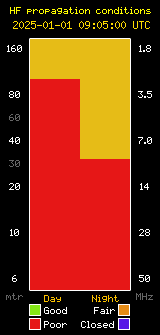General Club Meeting – March 18, 2016
We had a packed meeting this month in more ways than one! It was very well attended with a 59% increase in members in attendance compared with our recent averages. On top of that we had three presenters too! It started off with Jon Kent of the Santa Barbara Sheriff’s Aero Squadron. Jon explained what the Aero Squadron does and related some great stories. Jon has been a volunteer for decades and has flown many missions in support of local law enforcement, county government, and emergency services. He is truly a dedicated to public service, and is an inspiration to all of us. Gear, gear and more gear! The tables were packed with radio equipment that immediately drew interest from our members. Bill Talanian W1UUQ showed off some of his one-of-a-kind creations that help him support a wide variety of services including air observer support, repeater maintenance, and emergency services support. Also displayed on the main table was a repeater, controller, amplifiers and other gear slated soon for SBARC service. Out third speaker, Matt Lechliter, W6KGB, explained what it all was. Matt treated us to an extremely informative hour explaining how he hand builds our repeater systems for us. Although we seldom hear him on the air, he is nevertheless hard at work repairing our existing equipment and building new things for our future. Matt typically takes Motorola and GE commercial repeaters had hand fabricates new parts and electronics to turn them into top quality amateur radio repeater systems. Calling his creations “home-brew” does not do them justice. They are every bit as professionally constructed – if not more so – that the finest factory made ones. SBARC is extremely lucky to have people like Bill and Matt on our team. There is nothing “amateur” in what they do. Post expires at 1:50am on Wednesday April 20th, 2016 but will still be available in the archives.










